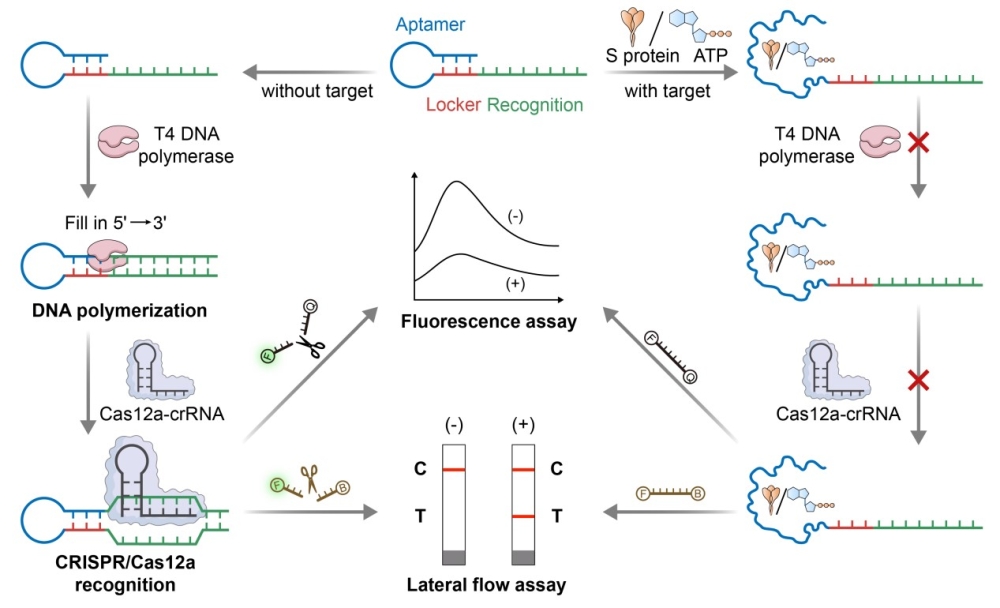Programmable Aptasensor for Regulating CRISPR/Cas12a Activity
Date:04-02-2024 | 【Print】 【close】
The clustered regularly interspaced short palindromic repeats (CRISPR) system, with advantages of simple manufacturing, portability, and high specificity, has been developed extensively and applied in the field of molecular diagnosis.
However, the CRISPR system cannot directly recognize proteins or small molecules.
Aptamers are stable DNA or RNA molecules that adopt specific structures with high affinity and specificity toward desired targets, enabling the transduction of target recognition into nucleic acid signals.
Recently, a research team led by Prof. MA Yingxin from the Shenzhen Institute of Advanced Technology (SIAT) of the Chinese Academy of Sciences has developed a programmable system for the detection of proteins and small molecules, termed the CRISPR-mediated programmable aptasensor (CPAS) platform. SARS-CoV-2 S protein and adenosine triphosphate (ATP) were detected with the detection limit of 0.06 pM and 0.06 μM, respectively.
This study was published in ACS Sensors on Dec. 12, 2023.
The researchers integrates an aptamer recognition element with CRISPR/Cas12a signal conversion and amplification components for detection. The specific binding of the target and aptasensors broken the hairpin structure of the aptamer and prevented the normal amplification of T4 DNA polymerase and further activation of Cas12a, resulting in a fluorescence reduction.
"By adjusting the aptamer sequence and the length of the locker DNA simply, any kinds of analytes can be detected," said Prof. MA. "Moreover, we found that the maximum signal-to-noise ratio can be achieved when the locker DNA length is 7nt and 4nt for protein and small molecule, respectively".
The sensitivity of the proposed method has surpassed that of the commercial ATP kit. Additionally, CPAS exhibits high specificity and accuracy. It can also allow for semi-quantitative analysis of target within 1h by combining with lateral flow immunoassay, further demonstrating its potential application in portable analysis.
This study provides new insights for improving the universality and ease of operation of aptasensors.

The target induces conformational changes in the aptasensor, regulating the trans cleavage activity of CRISPR/Cas12a. (Image by SIAT)
Media Contact:
ZHANG Xiaomin
Email:xm.zhang@siat.ac.cn